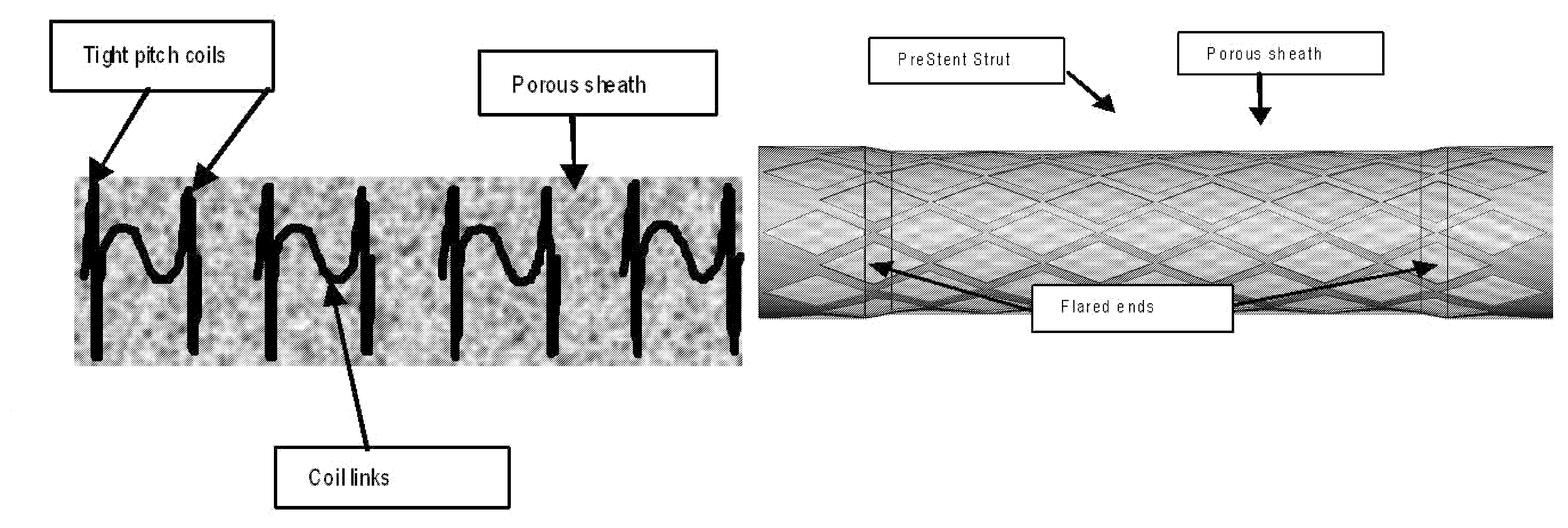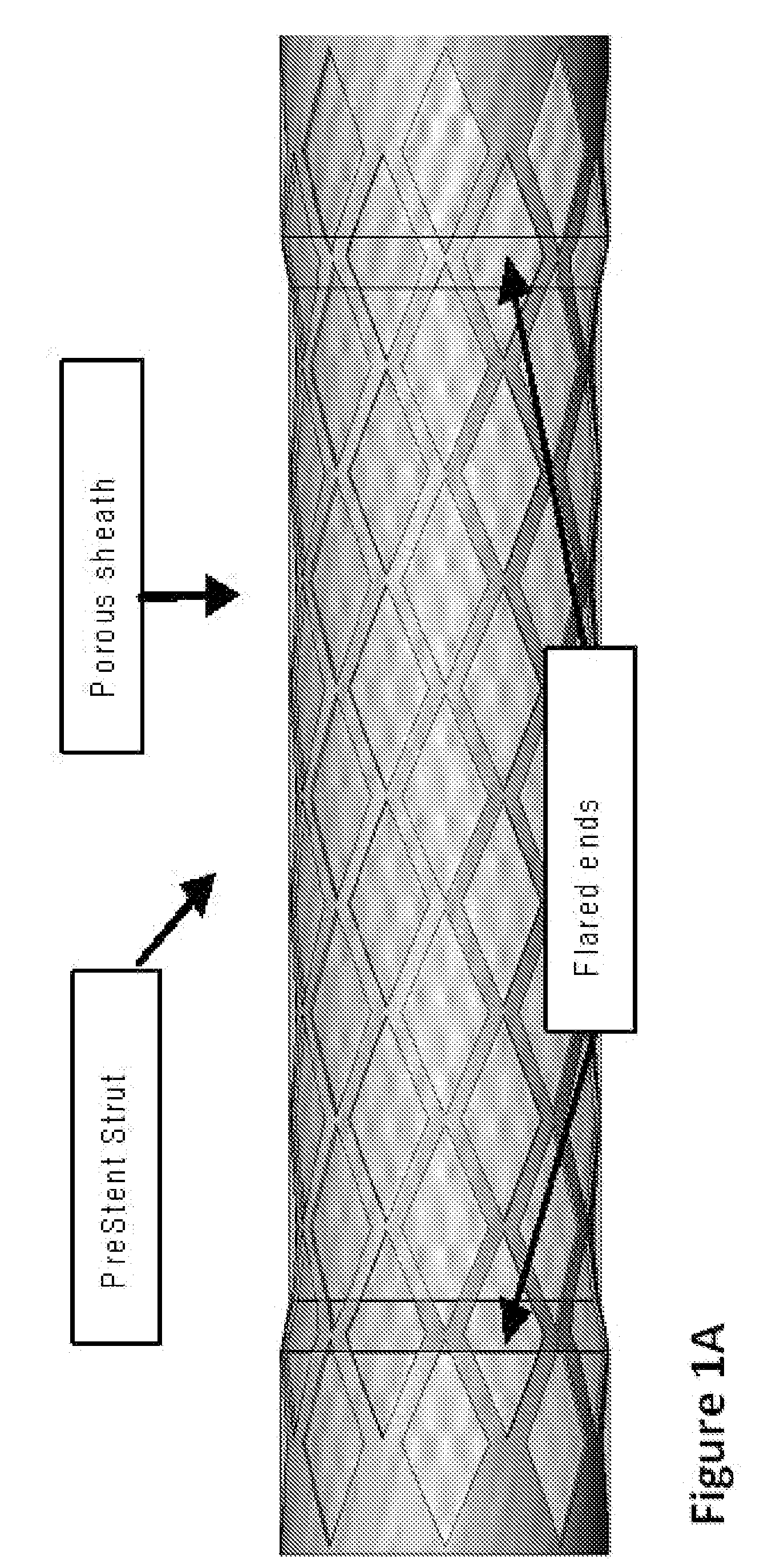Embolic protection devices and methods
a technology of embolism and protection device, applied in the field of devices and methods for preventing an embolism, can solve the problems that the previous design of covered stents would not work for this application
- Summary
- Abstract
- Description
- Claims
- Application Information
AI Technical Summary
Benefits of technology
Problems solved by technology
Method used
Image
Examples
Embodiment Construction
[0038]The first aspect of the present invention for embolic protection is a structure comprising a thin, expandable stent-like frame covered with a porous, expandable sheath (see FIG. 1A). The preferred frame design is shown in FIG. 1B. This structure acts as a precursor to a stent and is called a PreStent. Its main function is to cover the lesion completely so that no embolization can occur from subsequent operations such as balloon dilatation and / or stenting. Since it is left as an implant post-stenting, it also prevents embolization from occurring post-procedure. Post-procedure embolization is a possibility because most stents have abrasive struts that can dig into a vessel wall to dislodge plaque coupled with large openings between the struts that allow dislodged plaque particles to enter the bloodstream.
[0039]The step of crossing the lesion and deploying an EPD is replaced with the deployment of a PreStent with a low profile delivery device. All of the troublesome issues associ...
PUM
 Login to View More
Login to View More Abstract
Description
Claims
Application Information
 Login to View More
Login to View More - R&D
- Intellectual Property
- Life Sciences
- Materials
- Tech Scout
- Unparalleled Data Quality
- Higher Quality Content
- 60% Fewer Hallucinations
Browse by: Latest US Patents, China's latest patents, Technical Efficacy Thesaurus, Application Domain, Technology Topic, Popular Technical Reports.
© 2025 PatSnap. All rights reserved.Legal|Privacy policy|Modern Slavery Act Transparency Statement|Sitemap|About US| Contact US: help@patsnap.com



